Ed Gorman's Blog, page 153
July 21, 2012
W.R. Burnett and The Crime Writers of Hollywood
W.R. Burnett and The Crime Writers of Hollywood
by Pauline Kael
(excellent long piece; this is an excerpt)
The writers behind these movies wrote dime novels as early as the late 1920s; others debuted at the beginning of the '40s. Some worked in Hollywood in the '30s, but John Huston opened the door for them as screenwriters in 1941 with The Maltese Falcon, which was gritty, mean, and successful; it exposed a market for gritty, mean pictures. Raymond Chandler, James M. Cain, Horace McCoy, Jonathan Latimer, Frank Gruber, A.I. Bezzerides, Daniel Mainwaring, and, eventually, Jim Thompson supplied this market with what it wanted. In the '40s, they wrote screenplays for movies such as The Glass Key, The Blue Dahlia, Out of the Past, and The Big Clock; some of the writers worked successfully well into the '50s and gave us Kiss Me Deadly and The Killing. And when these guys weren't writing movies, their novels were being adapted into movies by other writers; the results were classics like Murder, My Sweet, The Big Sleep, and The Postman Always Rings Twice. The greatest illustration of this strain of movies was Double Indemnity (1944), which came from a script that Raymond Chandler wrote with director Billy Wilder, based on a novel by James M. Cain. Set in a desolate Los Angeles, it communicates a fatalistic sense of doom more powerfully than any other movie in its genre or any other.
Even more important to the development of the crime picture than Cain or Chandler, however, was writer named W.R. Burnett, now mostly forgotten. His first novel, Little Caesar, appeared in 1929; Hollywood bought it, and it made Edward G. Robinson, now best known for his role in Double Indemnity, a star in 1931. Burnett parlayed the movie's success into a gig as a screenwriter, and in 1932, he contributed to Ben Hecht's script for Scarface, which would, of course, inspire the 1983 movie of the same name. In the early '30s, Hollywood was still a long way from film noir. The gangsters of Little Caesarand Scarface, though destined for death, were much more heroic than the protagonists of the noir era. The gangsters murdered with skill; they built criminal empires and became wealthy. In the noir era, the typical protagonist was, at best, a small-time crook; usually, he was an ordinary guy lured into a half-baked heist or scam, not a gangster. And the detectives of the genre didn't bust Al Capone; they caught grubby degenerates from the seedy side of the city. Still, the gangster movies of the '30s paved the way for the likes of the The Postman Always Rings Twice by exposing viewers to violence and nastiness that the silent movies hadn't shown.
In 1941, Burnett bridged the gap between the two eras with High Sierra. It premiered eight and a half months before The Maltese Falcon, and like The Maltese Falcon, it starred Humphrey Bogart, a supporting actor for stars like James Cagney (Angels with Dirty Faces, The Roaring Twenties) in the gangster era who became a star in the noir era. It was directed by Raoul Walsh, and it was based on a novel by Burnett, which Burnett adapted for the screen with John Huston, The Maltese Falcon's screenwriter and director. Bosley Crowther reviewed it in the New York Times: "We wouldn't know for certain whether the twilight of the American gangster is here. But Warner Brothers, who should know if anybody does, have apparently taken it for granted and, in a solemn, Wagnerian mood, are giving that titanic figure a send-off befitting a first-string god in the film called High Sierra, which arrived yesterday at the Strand." Bogart's character, Roy Earle, "the last of the great gunmen," recently sprung from jail, is past his prime and lonely; his friends are "all either dead or doing time in Alcatraz." He falls in love with a lame girl and pays for an operation to fix her clubfoot; afterward, the girl promptly ditches him. He collaborates in a heist, which goes wrong; he hides from the police in the mountains until he's killed. He may go out in a blaze of glory, but we see here the transition from the heroic, ambitious gangster of the '30s to the pathetic, melancholy small-timer of the '40s.
for the rest go here:http://theworstever.typepad.com/blog/...
July 19, 2012
Forgotten Books: The Yellow Dog by Georges Simenon
In the Yellow Dog, a particularly well-plotted crime novel, Maigret travels to the small coastal town of Concarneau where a local wine merchant has been murdered under mysterious circumstances. According to a witness the man was strolling home on a windy night and paused to walk up steps leading to the narrow sheltered porch of a long empty house. Moments later the man fell backwards, dead from the shots.
Once there Maigret meets the four men and one waitress who seem to know much more than they're willing to share with him. He also sees a large yellow dog that keeps appearing at the crime scenes to come. Maigret feels a kinship with the animal which is more than he can say for anybody he meets in the town.
Where did the dog come from? Why does he keep showing up at such odd moments? Does he belong to the person who by book's end kills more people?
This is a serial killer novel. Simenon even casts the local newspaper as one of the villains. The editor has a history of exploiting bad news to the point of making each local tragedy worse. And the killings are no exception. Simenon suggests that it is sop for Frenchmen to a) have mistresses and b) go about armed. Both are factors in the investigation.
Most of the elements of classic Maigret are here. The weather is as vivid as the characters; Simenon buttresses his sociological look at French life with bleak humor; and his pity for decent people life has treated badly borders on the religious along with his contempt for pomposity and self-importance and cruelty.
There is always a claustrophobic feel to the Maigrets; this allows the reader to experience what the Inspector himself does. I enjoy Dame Agatha but as a forlorn chronicler of humankind Simenon is her superior.
July 18, 2012
Selling Out
From Hal Dresner's The Man Who Wrote Dirty Books…
"…a writer sells out when he agrees to do a bad book; he consummates the bargain when he knowingly lets a bad book slip from his hands. But during the actual writing, there is no such thing as 'selling out' or 'writing down.' A writer has but one voice and he must use it if he is to write, no matter what he is writing. To try to alter that voice for any sustained period is as difficult as trying to talk in a falsetto for a month. He may simplify, but that is simplification and not easy to do. He may also embellish with prosy curlicues, but that is only obfuscation and the true voice remains beneath the fruity tones. He may revise and rewrite and fill his drawers and trunks and wastebaskets in the process. I prefer to keep my wastebasket empty and fill my wallet, so I publish my little keepsakes.
"But make no mistake. They are mine and that is my voice you read. It can't be any other way. The limitations and requirements of the book limit my register and filter my tone like a bad microphone but I am still using my true voice. So if you didn't like This Flogged Flesh, the chances are you won't like my 'real books' either.
look for earl kemp's current fanzines here:
http://efanzines.com/
July 17, 2012
Monster by Dave Zelterserman
 Ed here: I read Monster in manuscript shortly after Dave finished writing it. I'll tell you what I told him. I think it's a masterpiece of originality, beauty, ugliness, eloquence, wisdom and power. I mean all this sincerely.And it's one hell of a page-turner as well. I'm glad to see the critics agree with me.BOOKLIST STARRED REVIEW Issue: June 1, 2012 *Monster: A Novel of Frankenstein. Zeltserman, Dave (Author) Aug 2012. 224 p. Overlook, hardcover, $23.95. (9781590208601). Repudiating the “outrageous fabrication” of Victor Frankenstein’s story as told by Mary Shelley is the aim of this imaginative and grotesque novel from the revisionist perspective of the monster. First off, the monster had a name, Friedrich Hoffmann. Second, he had a true love, Johanna. So that they could become unwilling participants in unholy experiments, the lovers were murdered by Dr. Frankenstein, whom Zeltserman portrays as a perverse maniac in the mold of Lovecraft's Herbert West, working in league with the Marquis de Sade. Awakening to find himself inside a hideous, patchwork body, Hoffmann’s first friend is Charlotte, a reanimated severed head in a bowl. Things get worse. Zeltserman’s monster is every bit as eloquent as Shelley’s, though his rage is more focused. He seeks to avenge Johanna, plain and simple. But the mystical rituals enacted by the doctor make insurrection difficult, and so Hoffmann wanders the countryside encountering changeling vampyrs, kindly monks, groveling Satanists, and, finally, a castle in which 200 girls have been kidnapped to be a part of Frankenstein and the Marquis’ unspeakable “drama.” This is juicy material for Franken-fans, and Zeltserman is just faithful enough to the original (he, too, ends with the fateful wedding night and the icebound ship) that his many fresh contributions feel entirely normal. Well, abnormal, to be accurate, but deliciously so. — Daniel KrausForeword Pick of The WeekMonster: A Novel of Frankenstein by Dave Zeltserman78-1-59020-860-1 / Fiction / Overlook Press / Hardcover / $23.95 / 224pp
Ed here: I read Monster in manuscript shortly after Dave finished writing it. I'll tell you what I told him. I think it's a masterpiece of originality, beauty, ugliness, eloquence, wisdom and power. I mean all this sincerely.And it's one hell of a page-turner as well. I'm glad to see the critics agree with me.BOOKLIST STARRED REVIEW Issue: June 1, 2012 *Monster: A Novel of Frankenstein. Zeltserman, Dave (Author) Aug 2012. 224 p. Overlook, hardcover, $23.95. (9781590208601). Repudiating the “outrageous fabrication” of Victor Frankenstein’s story as told by Mary Shelley is the aim of this imaginative and grotesque novel from the revisionist perspective of the monster. First off, the monster had a name, Friedrich Hoffmann. Second, he had a true love, Johanna. So that they could become unwilling participants in unholy experiments, the lovers were murdered by Dr. Frankenstein, whom Zeltserman portrays as a perverse maniac in the mold of Lovecraft's Herbert West, working in league with the Marquis de Sade. Awakening to find himself inside a hideous, patchwork body, Hoffmann’s first friend is Charlotte, a reanimated severed head in a bowl. Things get worse. Zeltserman’s monster is every bit as eloquent as Shelley’s, though his rage is more focused. He seeks to avenge Johanna, plain and simple. But the mystical rituals enacted by the doctor make insurrection difficult, and so Hoffmann wanders the countryside encountering changeling vampyrs, kindly monks, groveling Satanists, and, finally, a castle in which 200 girls have been kidnapped to be a part of Frankenstein and the Marquis’ unspeakable “drama.” This is juicy material for Franken-fans, and Zeltserman is just faithful enough to the original (he, too, ends with the fateful wedding night and the icebound ship) that his many fresh contributions feel entirely normal. Well, abnormal, to be accurate, but deliciously so. — Daniel KrausForeword Pick of The WeekMonster: A Novel of Frankenstein by Dave Zeltserman78-1-59020-860-1 / Fiction / Overlook Press / Hardcover / $23.95 / 224pp[image error]In nineteenth century Germany, a young man is
about to marry his beloved, but she is found murdered
, and he, who is innocent, is accused and put to death.
A few weeks later, he wakes to find himself transformed
into a hideous monster by the mad scientist Frankenstein.
With his brain and memory intact but trapped inside an
enormous, mismatched body, he escapes the lab and
embarks on a journey to take revenge on his accuser.
A tale of justice, true love, and ultimate forgiveness,
this gruesome novel is perfect for fans of Stephen King
and similar horror stories.
July 16, 2012
Body Double
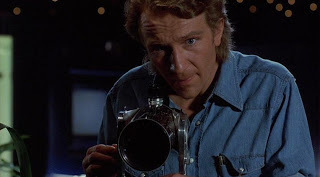 Ed here: This is a discussion from http://www.classicfilmtvcafe.com/ TCM Movie Morlocks. Even though I think Body Doubles is something of a mess structurally I enjoyed it and find this discussion entertaining.Sark and Rick Discuss Brian De Palma's "Body Double"This post is being republished as part of ClassicBecky's and Dorian'sThe Best Hitchcock Movies (That Hitchcock Never Made) blogathon. Click
here
to read other entries in the blogathon.
Ed here: This is a discussion from http://www.classicfilmtvcafe.com/ TCM Movie Morlocks. Even though I think Body Doubles is something of a mess structurally I enjoyed it and find this discussion entertaining.Sark and Rick Discuss Brian De Palma's "Body Double"This post is being republished as part of ClassicBecky's and Dorian'sThe Best Hitchcock Movies (That Hitchcock Never Made) blogathon. Click
here
to read other entries in the blogathon.This discussion of Body Double (1984) between film fans from different generations assumes that you’ve seen the film. But if you haven’t—or have, but need a plot refresher--here’s a synopsis:
Actor Jake Scully (Craig Wasson) experiences a debilitating episode of claustrophobia on the set of a low-budget horror film. Dismissed for the day, he discovers his girlfriend Carol making love to another man. Later, he learns that he has been fired from the movie. Since Carol owned the house they shared, Jake needs to find new lodgings. His luck improves when another actor, Sam, offers a house-sitting gig. One of the perks of the observatory-like house is a telescope aimed at the window of an attractive woman who performs a provocative dance routine every night. Jake becomes obsessed with his "window" neighbor, but becomes concerned when he spies another man watching and following her. (Body Double is rated R for adult themes, nudity, and violence.)
Rick29: Sark, you once said that De Palma’s best Hitchcock homages were the ones where he took Hitchcockian themes and turned them on their head. I think Body Double is a great example of that. On the surface, Body Double is a suspense film--and a very good one. But underneath the surface, it's a witty film about acting and deception. When Jake freezes up while reliving the "sardine game" in his acting class, the teacher yells at him: "You've got to act!" That's just what everyone around Jake does throughout the rest of the movie. Alexander Revelle acts the role of Sam who, in turn, acts the role of "the Indian." Holly acts out of the role of Gloria. Even Jake gets in the game, acting out the role of an adult film producer. The scene over the closing credit is a perfect coda, where De Palma shows us a body double in a shower scene in the horror film. Holly, who is standing beside the lead actress, tells her: "I bet this will get you a lot of dates." Thus, more deception will be promulgated!for the rest go here: http://www.classicfilmtvcafe.com/
[image error]
July 15, 2012
Writers Writing: A New Series From Carolyn Hart
From Carolyn Hart:
Ideas for books arrive as fragments, wisps, insubstantial imaginings. Often the end result owes little to the genesis. I had - I thought - a great idea for a lighthearted story about a protagonist who looks at a cat and perceives its thoughts. There were not to be talking cats. I have too much respect and awe for cats to presume to engage them in coversation. Could be great fun, right?Not this time.WHAT A CAT SAW does indeed feature a protagonist who perceives a cat's thoughts but the book is intense suspense with an underlying story about two lonely people who may - or may not - have found each other.Nela Farley, an out of work reporter, arrives as a stranger in a small Oklahoma town to take her sister's place at work at a charitable foundation while she is on holiday. Nela walks into an apartment, looks into the eyes of a cat, and learns more than it is safe for her to know. Along the way she tries to avoid arrest for a theft she didn't commit and solve the riddle of malicious occurrences at the foundation. After a bitter divorce, Steve Farley is back in town to take over the family newspaper. He knows and respects the cop who's after Nela, but he is intrigued by the new woman in town.Nela and Steve and the life and pulse of a smalltown newspaper reflect my love of the good reporting that makes small town newspapers important to a town and to its readers. I majored in journalism and was a reporter only briefly when out of school but I have never lost that fascination with reporting.Will Nela and Steve in WHAT THE CAT SAW (Berkley Octber 2 2012) be back again?That's up to readers. Nela and Steve debut this fall. The fourth in the Bailey Ruth series - HIJACKED GHOST - will be published by Berkley in October 2013.I love writing about Bailey Ruth, a redheaded ghost late of Adelaide, OK. I also love writing about Steve and Nela and would be interested to know what happens to them.I'm reaching out to readers in September to share news of WHAT THE CAT SAW. If you are interested in receiving a newsletter, please go to my website www.CarolynHart.com and sign up.And, as they used to say in the old time radio soaps, Will Nela and Steve return? Will Bailey Ruth continue her heavenly adventures?Stay tuned.
[image error][image error]
July 14, 2012
Writers Writing: The Miles Jacoby Series by Robert J. Randisi
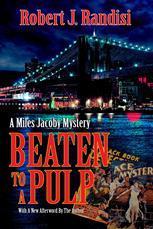

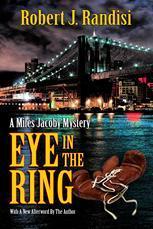 BEATEN TO A PULP202 PAGES $12.95ISBN: 978-1-935797-41-8FULL CONTACT204 PAGES $12.95ISBN: 978-1-935797-43-3EYE IN THE RING186 PAGES $12.95ISBN: 978-1-935797-40-1A boxer hangs up his gloves to becomea private eye . . . and the real rough stuff begins.
BEATEN TO A PULP202 PAGES $12.95ISBN: 978-1-935797-41-8FULL CONTACT204 PAGES $12.95ISBN: 978-1-935797-43-3EYE IN THE RING186 PAGES $12.95ISBN: 978-1-935797-40-1A boxer hangs up his gloves to becomea private eye . . . and the real rough stuff begins.

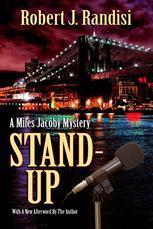
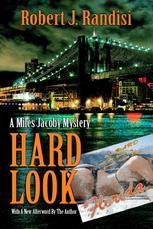 SEPARATE CASES180 PAGES $12.95ISBN: 978-1-935797-45-6STAND-UP184 PAGES $12.95ISBN: 978-1-935797-44-9HARD LOOK194 PAGES $12.95ISBN: 978-1-935797-42-5"Randisi's Jacoby is a chip off Lawrence Block." Boston Globe"Each of Randisi's novels is better than itsentertaining predecessor." Booklist
SEPARATE CASES180 PAGES $12.95ISBN: 978-1-935797-45-6STAND-UP184 PAGES $12.95ISBN: 978-1-935797-44-9HARD LOOK194 PAGES $12.95ISBN: 978-1-935797-42-5"Randisi's Jacoby is a chip off Lawrence Block." Boston Globe"Each of Randisi's novels is better than itsentertaining predecessor." BooklistRobert J: Randisi:
You might say Miles Jacoby was my first series P.I.. I did write a P.I. book before that, though. THE DISAPPEARANCE OF PENNY featured New York P.I. Henry Po, but fate stepped in and there was never another Po book (although there were a bunch of short stories).
I took the proposal for the first Jacoby book, EYE IN THE RING, with me when I met with my soon-to-be agent to discuss whether or not he wanted to represent me. He called me the day after out meeting and said “I would very much like to represent you.” Two weeks later he sold EYE IN THE RING to Avon as a paperback original. That was 1981, and the book was published in 1981, the first of 6 that would appear over the next decade or so and feature ex-boxer turned private eye, Mules Jacoby.
Not Perfect Crime Books has brought all the Jacoby books back as ebooks and as POD trade paperbacks with beautiful covers by artist Chris Mills. And I’ve been able to return book two, THE STEINWAY COLLECTION, to it’s original title, BEATEN TO A PULP (suggested by Bill Pronzini), which Avon did not like. I always felt the Steinway title made the book sound like it as about pianos, when it’s actually about a missing collection of pulp magazines.
I appreciate John Boland, the publisher at Perfect Crime Books, being willing to bring out the Jacoby titles again for a new audience to hopefully find. And I thank Chris Mills for the stunning covers. Jacoby is the P.I. I’ve written the most books about. Henry Po appeared in one book, Nick Delvecchio in three. I have a 7th Jacoby in mind, but it remains to be seen if I will ever have time to write that one. If I do, I’d be honored to have Perfect Crime bring it out. Take a look at their website (http://www.perfectcrimebooks.com/) they’re doing some great things with new books, as well a bringing back some classics.
July 13, 2012
Hey That's A Funny Rape Joke. Not.
Now he's told a rape joke that has pissed off a lot of people except for comedians who are all up in the Censorship wars. I agree with them that there shouldn't be any censorship in this case. If you find rape hi-larious then go ahead and use it as a topic. Huffington Post reported today that in fact Turd.O has a half hour with even more rape jokes coming up. I wouldn't censor that either.
I have some experience with victims of rape however. In my early Thirties I was lined up by a female friend I'd gone to college with. Her sister had come back from the West Coast two years earlier and hadn't dared since even though she was quite bright and attractive. She was also lonely. The problem was she'd been raped and was terrified of going out with men again. I never saw her exclusively but we went out on and off for longer than a year. I really got to know her and what she'd gone through and what she'd likely continue to go through for years, maybe her entire life. In a real sense the creep who'd raped her had destroyed her.
My wife has a good friend who was raped. At the trial her rapist said he would look her up when he got out. His entire life has involved violence, I doubt prison has changed him. He gets out this year. She's so scared she's moving to another state and thinking about legally changing her name. Given this sonofabitch's background I don't blame her. But it's heartbreaking seeing her so scared 24-7. Even sleep is no respite. Nightmares.
Last year (maybe Comedy Central) there was a monthly show that featured a B-level standup host discussing comedy with C-and-D-level comics. To a person they were among the dumbest, least literate cliche-mongers I'd ever heard. Think Adam Carolla--women aren't funny; fag jokes are ok because they get laughs--then work your way down from there a couple levels and you've got them. We're a long way here from Richard Pryor and George Carlin and Robert Klein.
So if you're pig enough to find rape jokes funny go ahead and be my guest. But grow up at least to age sixteen and don't be shocked when the grown ups fire back at you.
Hey that's a pretty funny rape joke. Not.
Now he's told a rape joke that has pissed off a lot of people except for comedians who are all up in the Censorship wars. I agree with them that there shouldn't be any censorship in this case. If you find rape hi-larious then go ahead and use it as a topic. Huffington Post reported today that in fact Turd.O has a half hour with even more rape jokes coming up. I wouldn't censor that either.
I have some experience with victims of rape however. In my early Thirties I was lined up by a female friend I'd gone to college with because her sister had come back from the West Coast two years earlier and had never dated even though she had very popular at one time and was quite bright and attractive. She was also lonely. The problem was she'd been raped and was terrified of going out with men again. I never saw her exclusively but we went out on and off for longer than a year. I really got to know her and what she'd gone through and what she'd likely continue to go through for years, maybe her entire life. In a real sense the creep who'd raped her had destroyed her.
My wife has a good friend who was raped. At the trial her rapist said he would look her up when he got out. His entire life has involved violence, I doubt prison has changed him. He gets out this year. She's so scared she's moving to another state and thinking about legally changing her name. Given this sonofabitch's background I don't blame her. But it's heartbreaking seeing her so scared 24-7. Even sleep is no respite. Nightmares.
Last year (maybe Comedy Central) there was a monthly show that featured a B-level standup host discussing comedy with C-and-D-level comics. To a person they were among the dumbest, least literate cliche-mongers I'd ever heard. Think Adam Carolla--women aren't funny; fag jokes are ok because they get laughs--then work your way down from there a couple levels and you've got them. Brainiacs rarely become stand-up comics.
So if you're pig enough to find rape jokes funny go ahead and be my guest. But grow up at least to age sixteen and don't be shocked when the grown ups fire back at you.
July 12, 2012
Forgotten Books: Rendezvous In Black by Cornell Woolrich
This is one of Woolrich's famous "Black" books and black it is. Bleak as David Goodis gets his protagonists usually attempt to make some kind of connection to another human being. Not with with Woolrich.
I'm not going to describe the set-up here because laid it flat it is so outlandish you might think twice about reading the book. But Cornell Woolrich was nothing if not shrewd. By the time you figure out what's going on you've had a chance to prepare yourself. You've been putting it all together piece by piece so when the picture is complete you just nod and accept it.
And anyway as with most Woolrich books and stories the set-up doesn't matter all that much anyway. What makes Woolrich Woolrich is how his protagonists respond to the set-up. This novel is built on a series of richly detailed character studies of several men who have begun dying in ways that would be ironic even to them if they could step back and see it with any objectivity.
Woolrich is often compared to Poe and while I think that's fair--they are both masters of claustrophobia and obsession--I think in all Woolrich's real literary father was Guy de Mauppassant. Woolrich has de Mauppassant's fascination with society high and low for one thing, and a sly ear and eye for realistic daily life. There is a lot of Edward Hopper in Woolrich's word paintings of the Thirties and Forties. I'm not sure that Poe an equivalent interest in his own time.
This is my favorite Woolrich novel which is to say that he has told a story of such cleverness and nihilistic power you see why Woolrich is so revered. This is one of those books, one of those books that crush, and linger on long after you finish it.
Ed Gorman's Blog
- Ed Gorman's profile
- 118 followers



